How are the MBTI and Big Five personality traits connected?
Reading time: 10 minutes

Gregory Park, Ph.D.
Author
The Myers-Briggs Type Indicator (MBTI) and the Big Five framework are two popular — and confusing — topics in personality.
In this post, I’ll cover:
If you want to jump straight to the Big Five dimensions for a specific type, click the type here:
Occasionally, people describe the MBTI and the Big Five as two competing personality theories or models, but this is incorrect.
Why? While the MBTI does rely on an underlying personality theory, the Big Five does not. First, let’s start with the theory behind the MBTI.
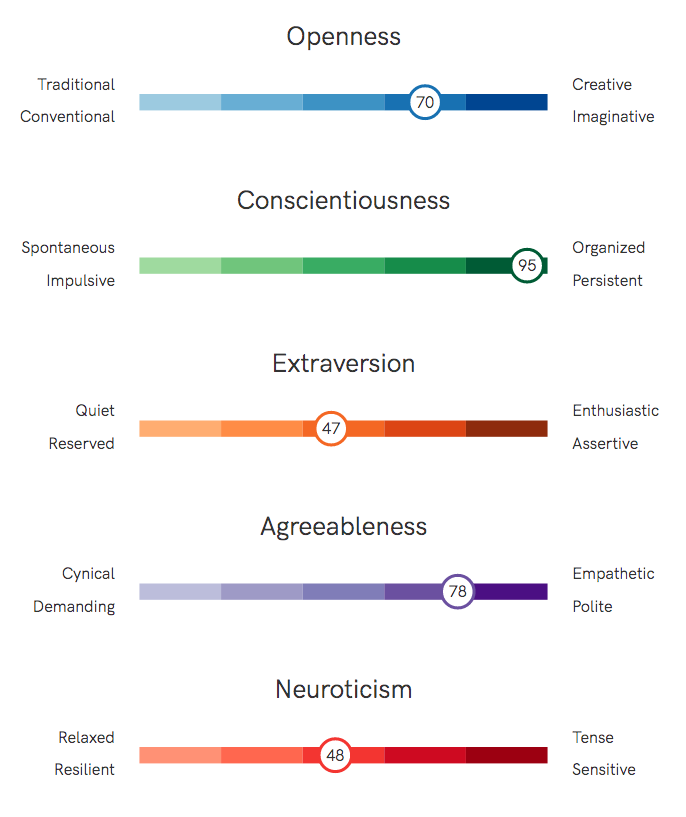
Do you know your Big Five?
Learn about your personality traits and so much more with TraitLab's comprehensive assessment.
The Myers-Briggs, MBTI, and other “16 personality”-like models of personality all share a loose connection to Carl Jung’s theories, as interpreted by Isabel Myers and Katharine Briggs. I’ll refer to this specific interpretation as MBTI theory.
According to MBTI theory, personality differences are due to differences in attitudes and cognitive functions.
The primary distinction between people is in their attitude towards extraversion or introversion. In MBTI theory, an extraverted attitude reflects a stronger orientation towards the external world of objects and people. In contrast, those with a more introverted attitude gravitate towards the inner, subjective world of concepts and ideas.
Regardless of their extraverted or introverted attitude, MBTI theory claims that all people process information and make decisions using the same four cognitive functions: Sensing, Intuition, Thinking, and Feeling.
In MBTI theory, Sensing and Intuition are Perceiving cognitive functions. Both functions allow one to perceive, become aware, and take in new information about the world.
These two perceiving functions are often labeled irrational because they are concerned with attending to the flow of information without any logical or rational constraints.
Sensing refers to perception through the sensory system. Through sensing perception, people gain awareness of their immediate environment directly with their senses in the present moment.
Intuition refers to perception from sources other than the sensory system. For example, with intuitive perception, people perceive abstract patterns and connections between ideas or notice a “gut feeling” about a situation.
Thinking and Feeling are Judging cognitive functions. These two functions bring rational order to the flow of information apprehended by the perceiving functions.
These functions are often labeled rational because they are concerned with applying reason: making logical connections, deducing cause and effect, assessing relative values and needs among people, and so on.
Thinking refers to judgment made through the application of logic. With thinking judgment, people make decisions based on objective, logical connections. By nature, thinking judgment is impersonal, critical, and analytical.
Feeling refers to judgment made by comparing relative values or interpersonal concerns. With feeling judgment, people make decisions based on the values and needs of other people. Feeling judgment often requires an acute understanding of others’ emotions, desires, and perceptions.
MBTI theory claims that people differ in how they present themselves to the outer world. Their attitude towards either Judging or Perceiving describes their tendency to present either a judging function or a perceiving function to the external world (i.e., other people).
A person with a Judging attitude primarily presents one of the two judging functions (Thinking or Feeling) to the outer world. Yet, at the same time, they tend to favor a perceiving function (Sensing or Intuition) in their inner, subjective world.
Conversely, a person with a Perceiving attitude tends to present one of the two perceiving functions (Sensing or Intuition) to the outer world. They favor a judging function (Thinking or Feeling) in their inner world.
In MBTI theory, people differ in their preferences among these cognitive functions.
Of the four functions, everyone has a primary cognitive function, which they fully develop over time and come to favor the most. A secondary auxiliary function always balances the primary function. For example, if the primary function is a perceiving function, then the secondary function will be a judging function, and vice versa.
People reserve their primary, most developed function for the inner or outer world, depending on their extraverted or introverted attitude. Extraverts present their primary function to the outer world, while introverts present their auxiliary function to the outer world, keeping their primary function to their inner subjective world.
The four-letter types from MBTI theory encode each type’s attitudes and preferred cognitive functions.
Take the example of the ESTP type:
ESTPs’ primary cognitive function is sensing perception (S).
Why? Because ESTPs have an extraverted attitude (E) and a perceiving attitude (P), they present their perceiving function (S) to the outer world, where they are most comfortable as extraverts. And because ESTPs’ perceiving function is sensing (S), it is also their primary cognitive function.
Consider another example, the INFJ:
INFJs’ primary cognitive function is intuitive perception (N).
Why? INFJs have an introverted attitude (I) and a judging attitude (J), so they present their judging function (F) to the outer world. However, INFJs are introverted and oriented to the inner world, so their primary cognitive function is not what they show to the external world. Instead, their primary cognitive function is their perceiving function: intuition or intuitive perception (N).
While MBTI theory describes a complex interaction between cognitive functions and attitudes, assessment is relatively straightforward. Most MBTI-based measures are simply four independent scales: Extraversion-Introversion, Sensing-Intuition, Thinking-Feeling, and Judging-Perceiving.
Scores on each scale determine whether a person has an extraverted vs. introverted attitude, prefers sensing or intuition as a perceiving function, prefers thinking or feeling for a judging function, and has a judging or perceiving orientation towards the outer world.
Because the assessment of these dimensions — and the interpretation of the resulting scores — depends heavily on an underlying theory, one could classify the MBTI and similar typologies as primarily theory-driven. In other words, the MBTI theory asserts the structure of personality and determines which dimensions to measure.
While TraitLab can predict how MBTI-like assessments would classify someone, that is not an endorsement of MBTI-based or related typological theories. Despite the broad popularity of MBTI-like evaluations, little empirical evidence supports the underlying MBTI theory described above.
The so-called Big Five is a taxonomy, or classification system, of personality dimensions. As a taxonomy, it describes the relationships across a wide range of personality traits based on their statistical similarity. This system is not proprietary and formed slowly over decades of empirical research.
Because the structure described by the Big Five relies on observed, statistical similarities rather than theoretical claims like the MBTI, one could classify the Big Five as primarily data-driven.
The Big Five arose from analyses of the several thousands of adjectives used to describe personality. For example, in several studies, participants read a list of hundreds of adjectives and rated each adjective based on how well it represented them.
When researchers analyzed these word ratings with statistical techniques, several clusters of related words emerged. For example, people rated themselves very similarly on the words aloof, distant, unsocial, and withdrawn, suggesting they describe the same underlying dimension. Likewise, the pattern of ratings among words like patient, moderate, tactful, and polite suggested a different underlying dimension.
Across many studies, using varying sets of words and rating methods, five “big” clusters consistently appeared:
These ultimately formed the Big Five dimensions, and these factors describe the structure of relationships between personality-descriptive words in the English language.
After identifying the Big Five factors, researchers designed assessments that measured these underlying dimensions more directly than through word ratings. Statistical analyses of the responses from these direct assessments revealed layers of smaller dimensions within each of the Big Five factors.
In this system, the domain level refers to the five dimensions of Openness to Experience, Conscientiousness, Extraversion, Agreeableness, and Neuroticism. Aspects refer to a layer of 10 smaller dimensions below the domain level, and facets refer to a set of 30 smaller dimensions below those.
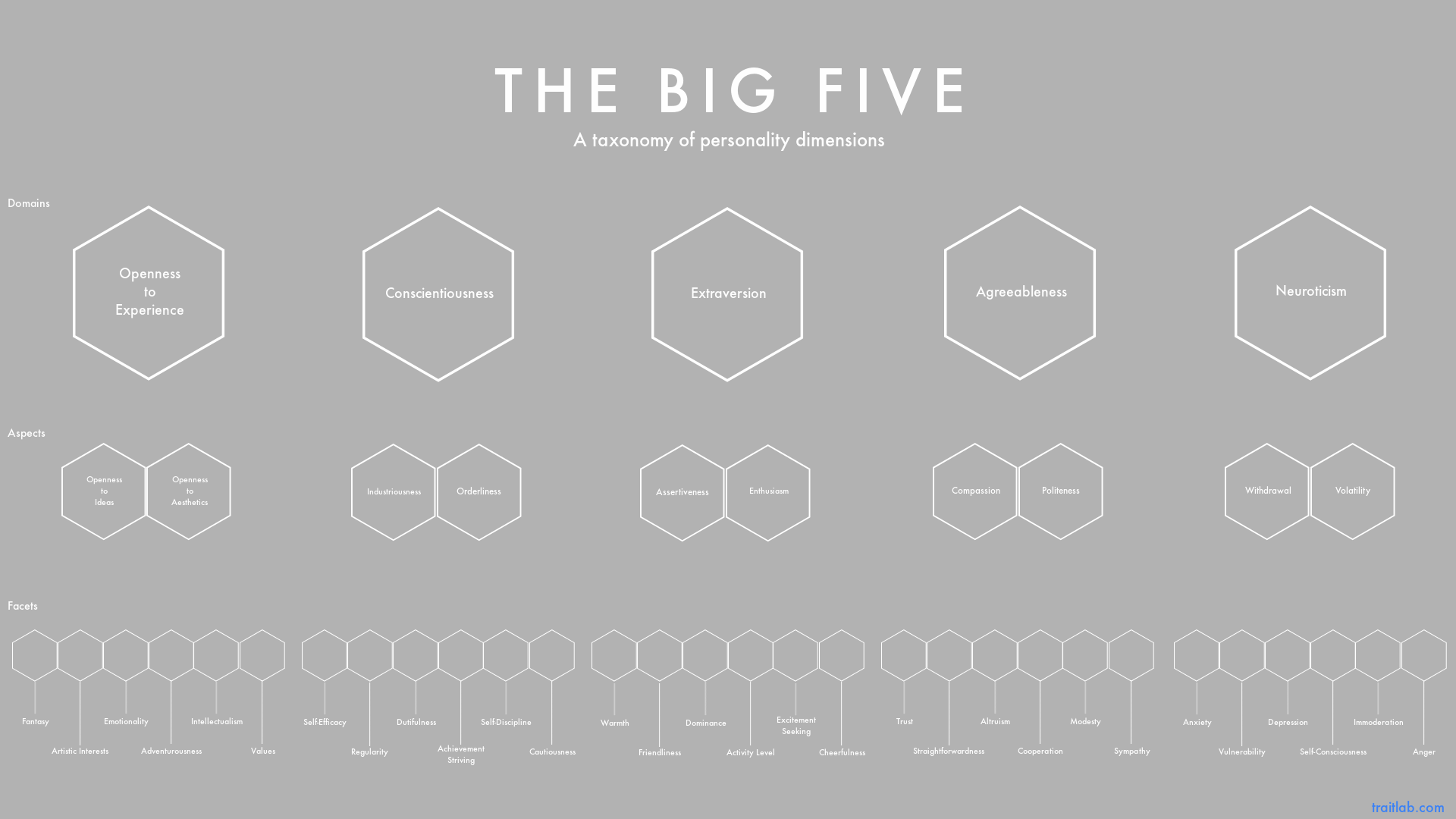
Again, this system only describes the statistical relationships between dimensions. It is primarily descriptive and not explanatory. It does not assert anything about psychological, developmental, or neurobiological mechanisms behind this structure.
Consider it as a zoomed-out map of the personality landscape. It roughly describes the geography of the land, but it doesn’t explain how or why the geography has its current shape.
Using the Big Five taxonomy as a map (along with some statistical analysis), one can identify the location of most proposed personality dimensions. Some dimensions turn out to be a simple renaming of an existing dimension, while other dimensions are a combination of several dimensions in the taxonomy.
Several peer-reviewed articles have detailed the statistical correlations between the four MBTI scales (Extraversion-Introversion, Sensing-Intuition, Thinking-Feeling, and Judging-Perceiving) and dimensions in the Big Five taxonomy.
One consistent finding is that none of the MBTI scales have a simple one-to-one mapping to a Big Five dimension. Instead, each MBTI scale correlates with several dimensions in the Big Five taxonomy.
As a result, simply knowing a person’s MBTI type does not allow one to predict their position on the Big Five dimensions. However, it is possible to estimate the distribution of Big Five dimensions within each MBTI type.
These distribution patterns give a glimpse into the underlying personality variation within each MBTI type.
Below, you’ll find every MBTI type and a snapshot of their typical Big Five dimensions.
In each graph, darker blue areas show where most people in that type tend to score on a given Big Five dimension. Conversely, lighter, spottier blue areas show where fewer people in that type tend to score.
Click on the image or link in each type section for a more detailed analysis of that MBTI type.
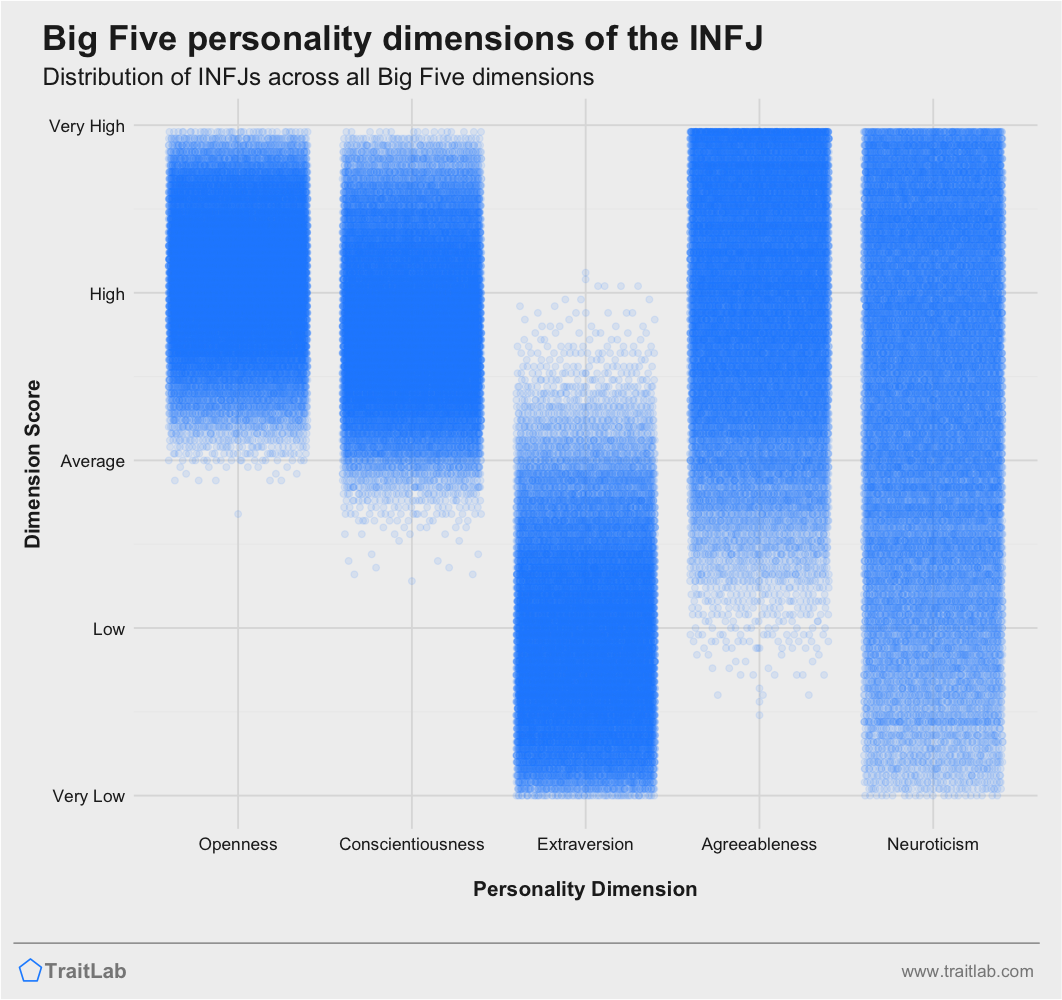
See the full INFJ Big Five article for more details.
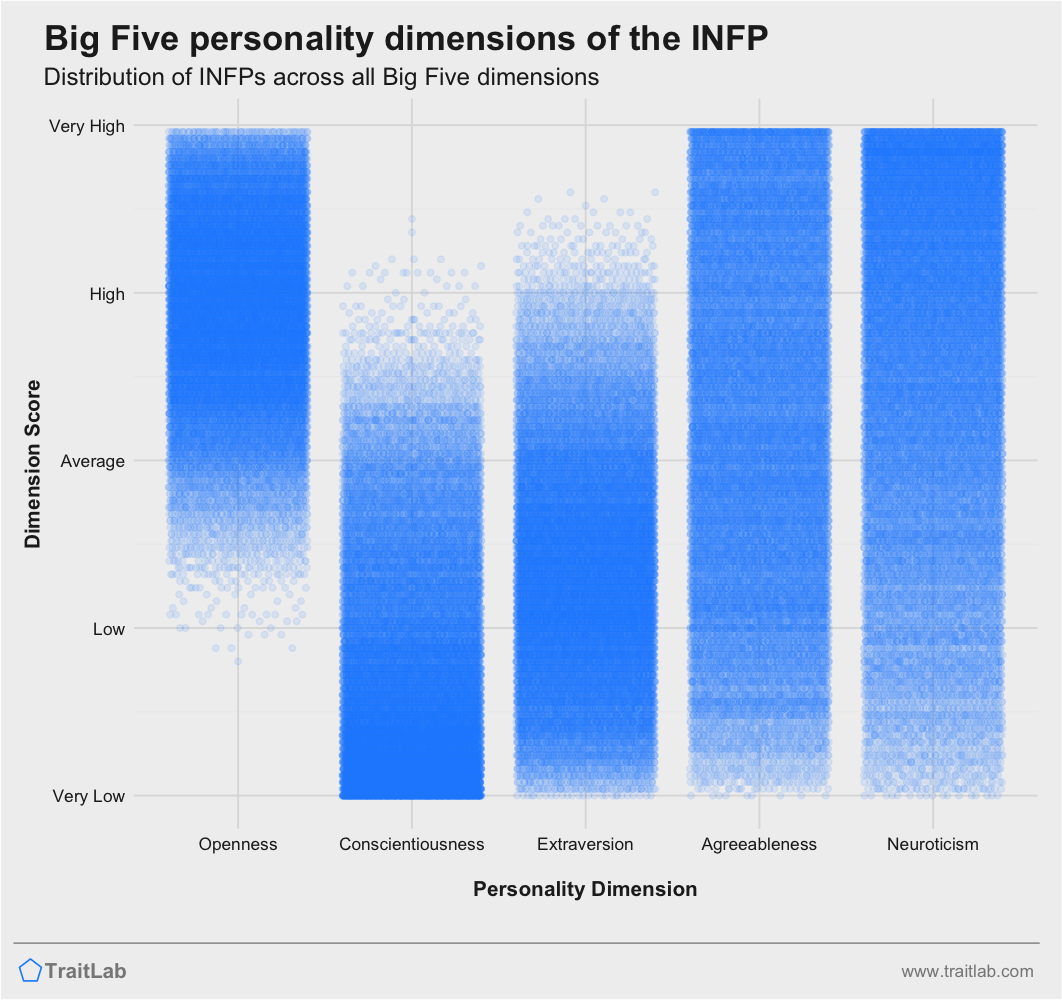
See the full INFP Big Five article for more details.
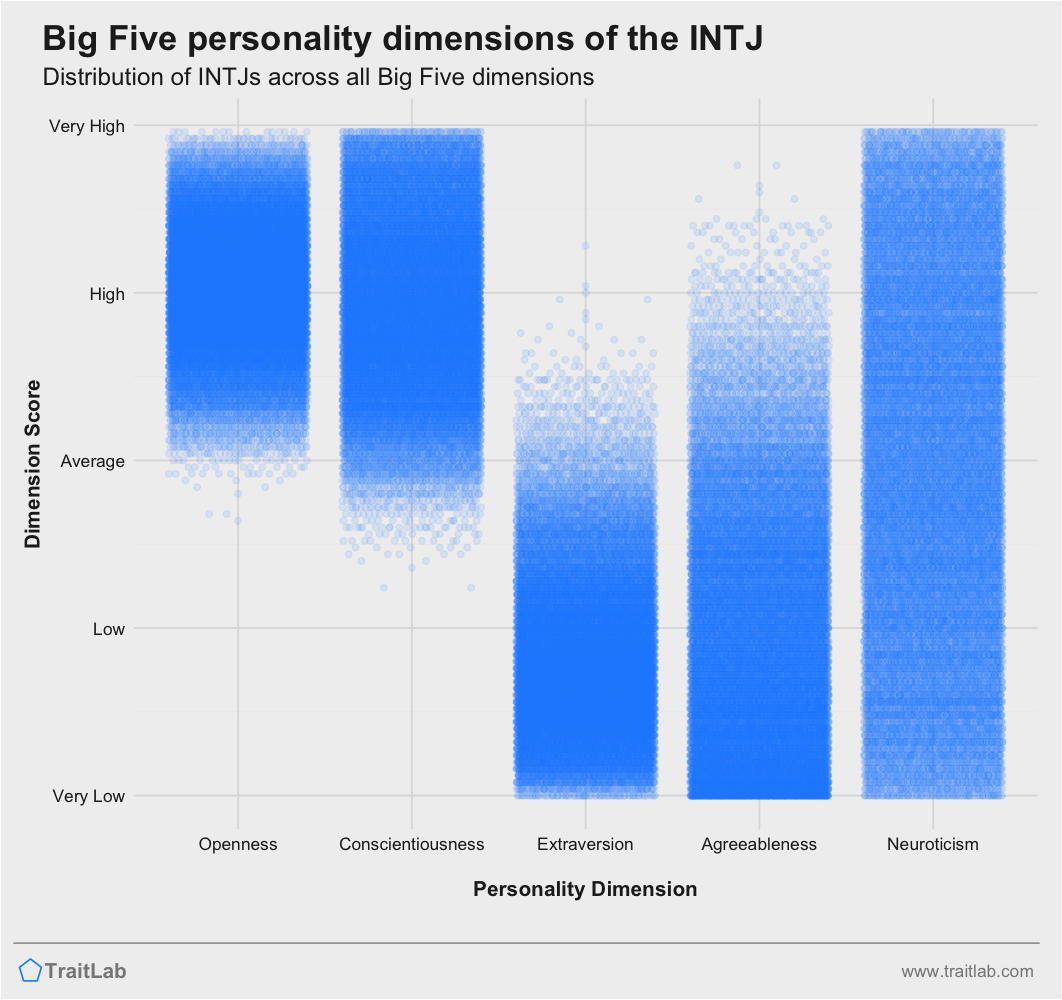
See the full INTJ Big Five article for more details.
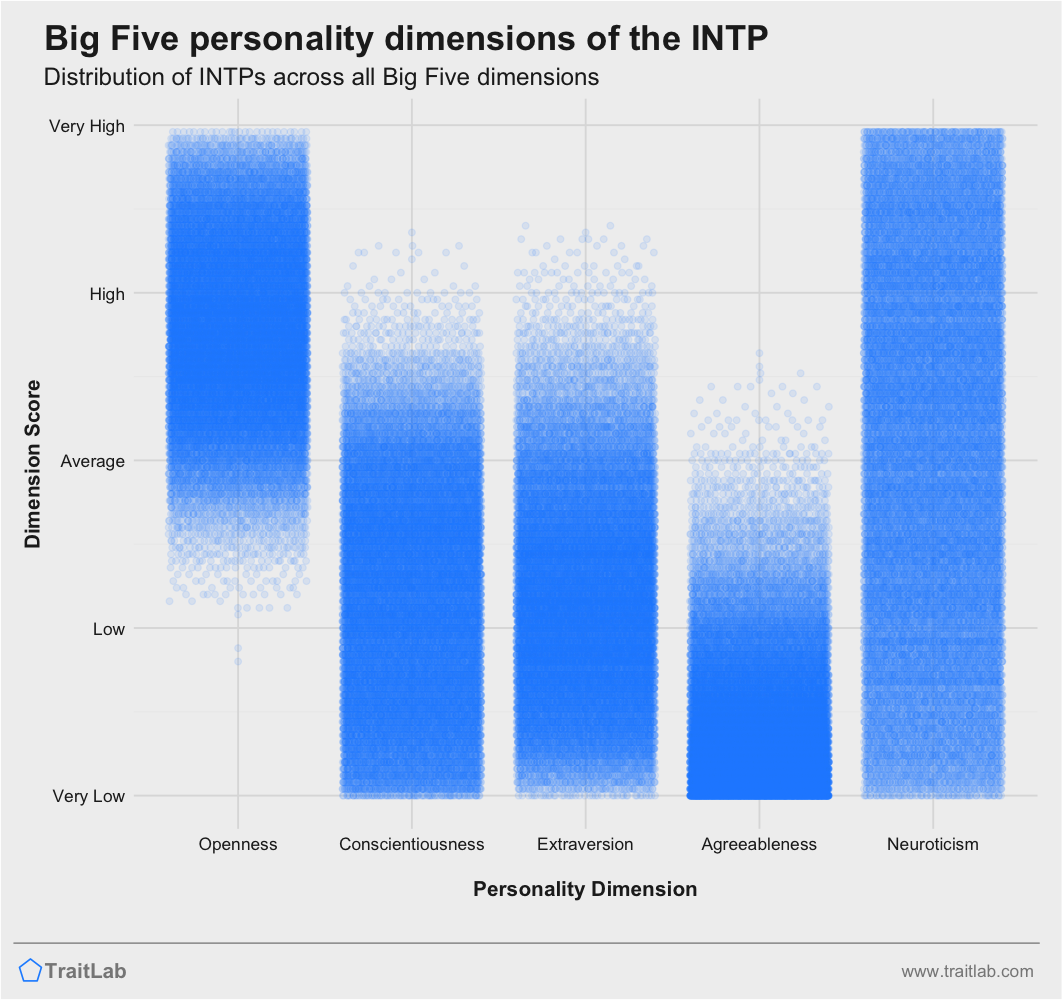
See the full INTP Big Five article for more details.
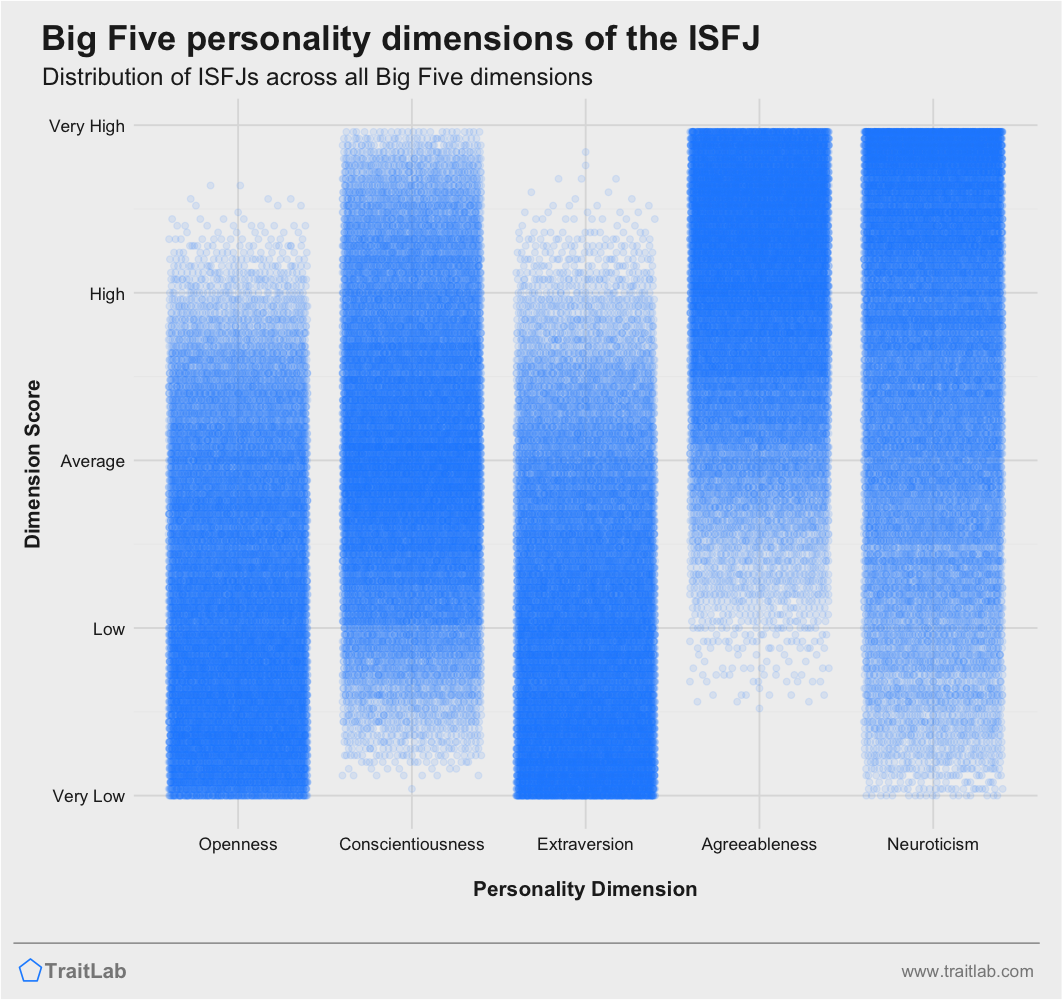
See the full ISFJ Big Five article for more details.
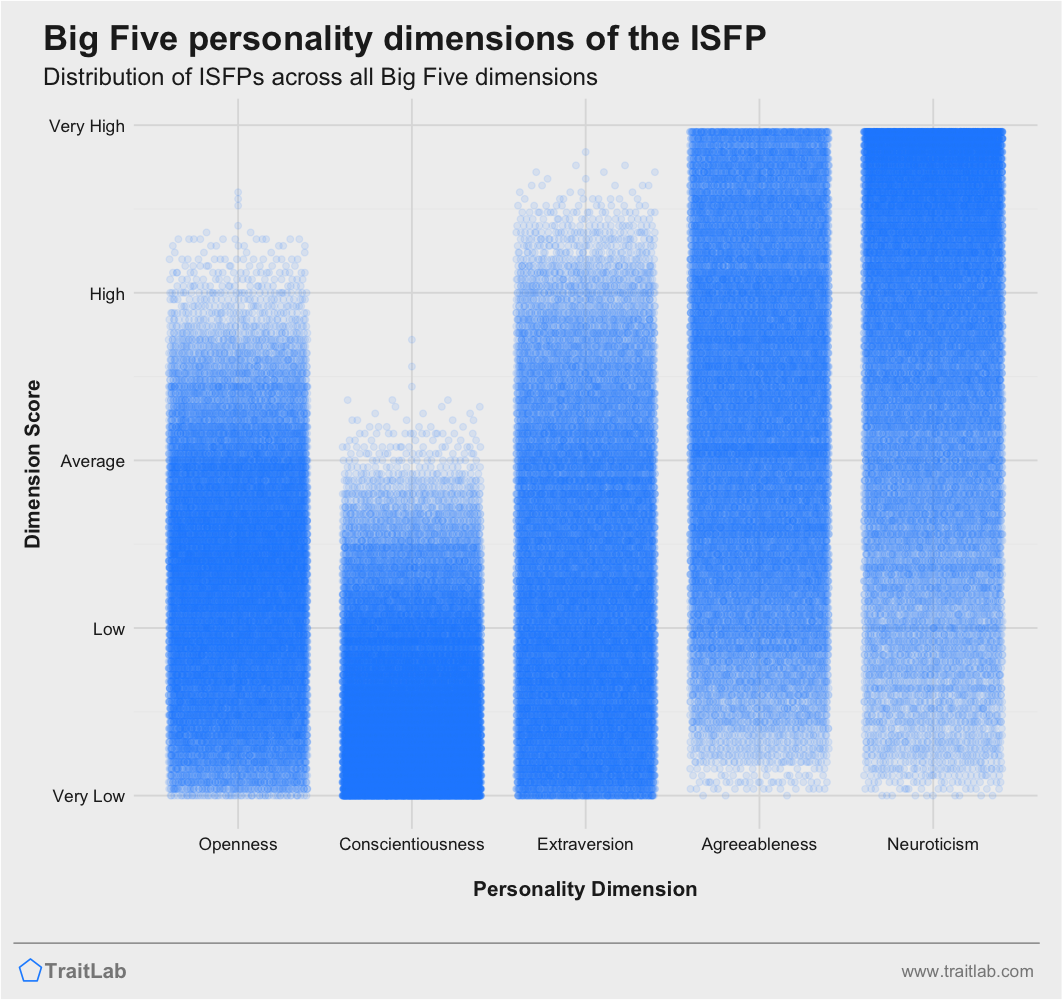
See the full ISFP Big Five article for more details.
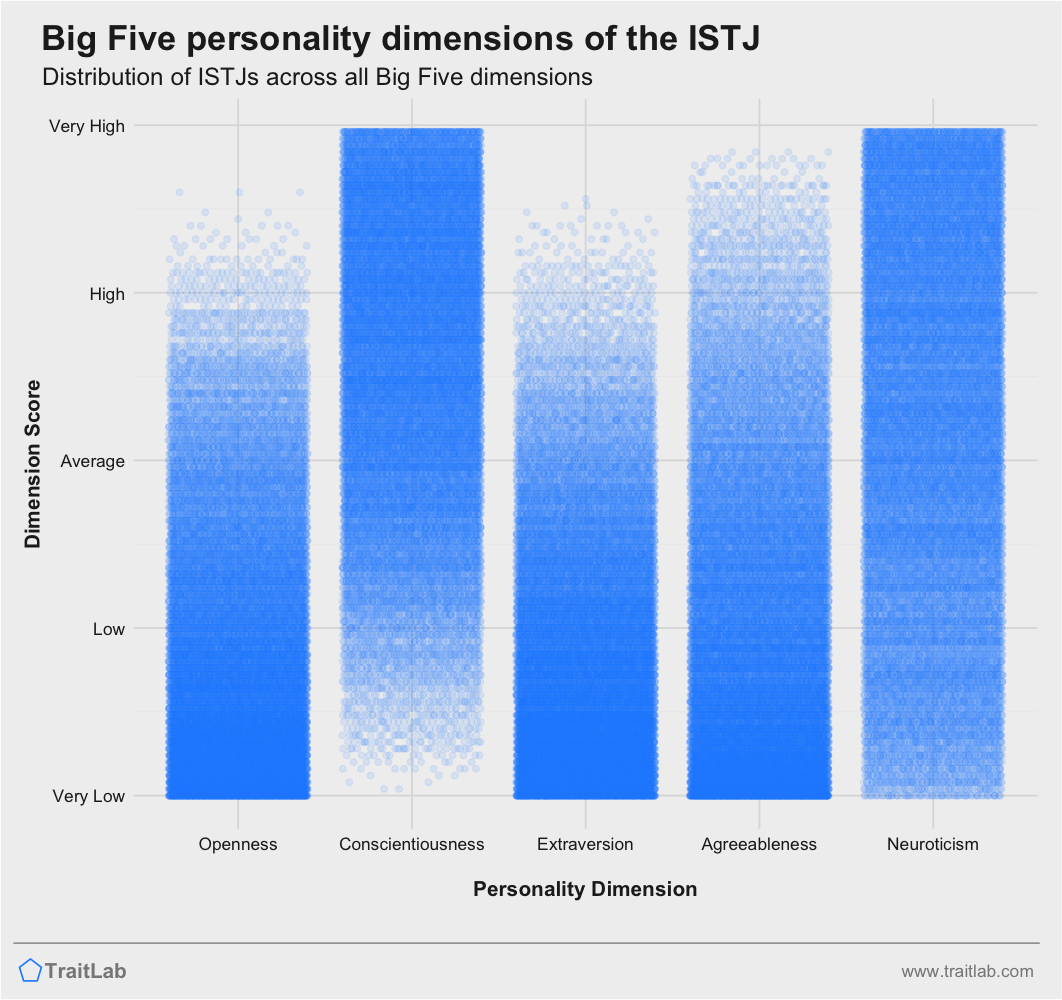
See the full ISTJ Big Five article for more details.
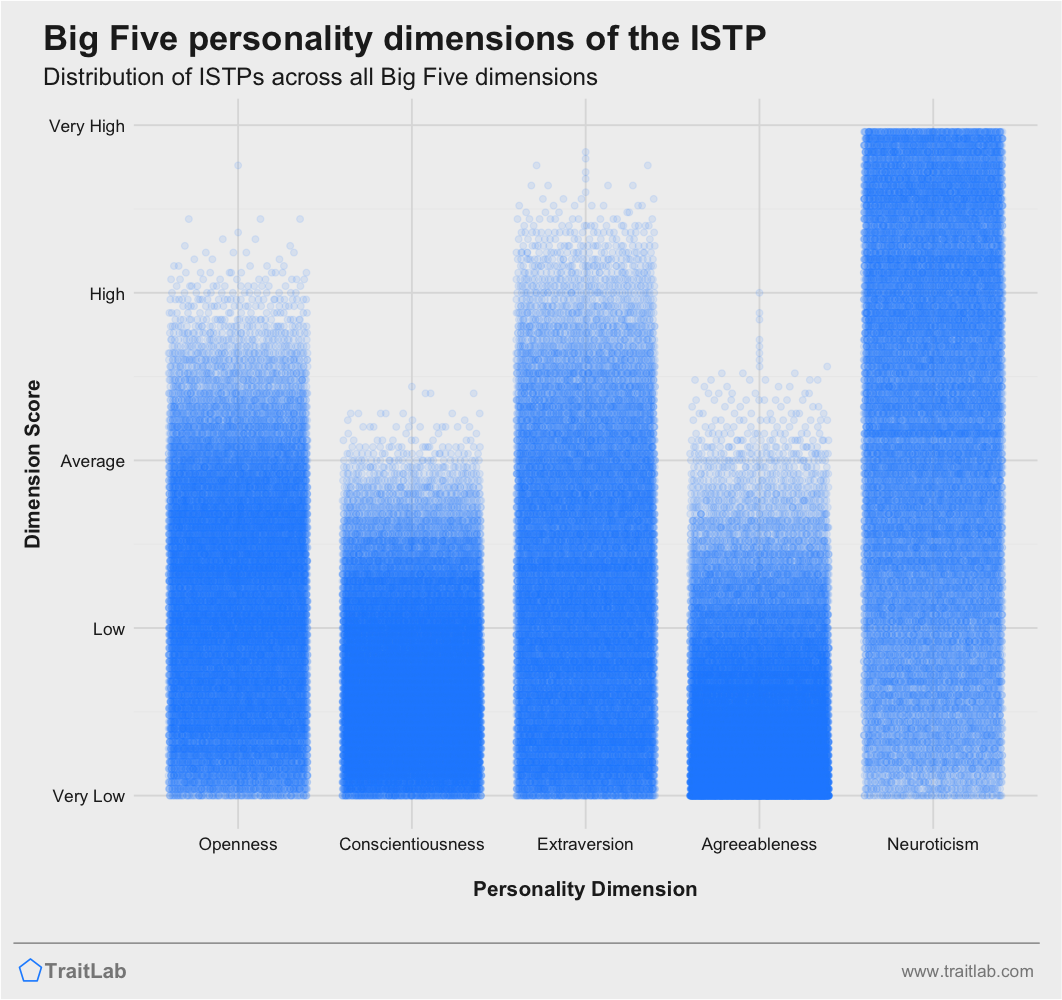
See the full ISTP Big Five article for more details.
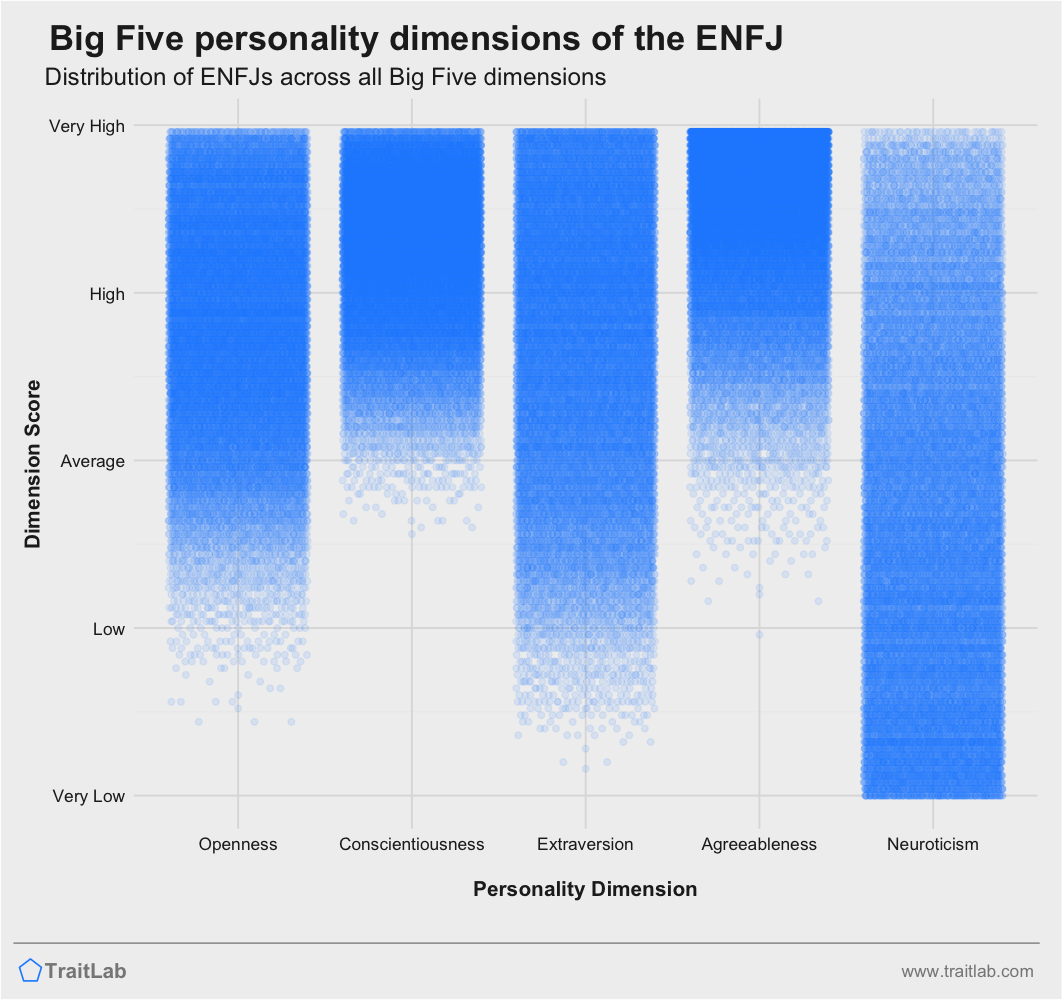
See the full ENFJ Big Five article for more details.
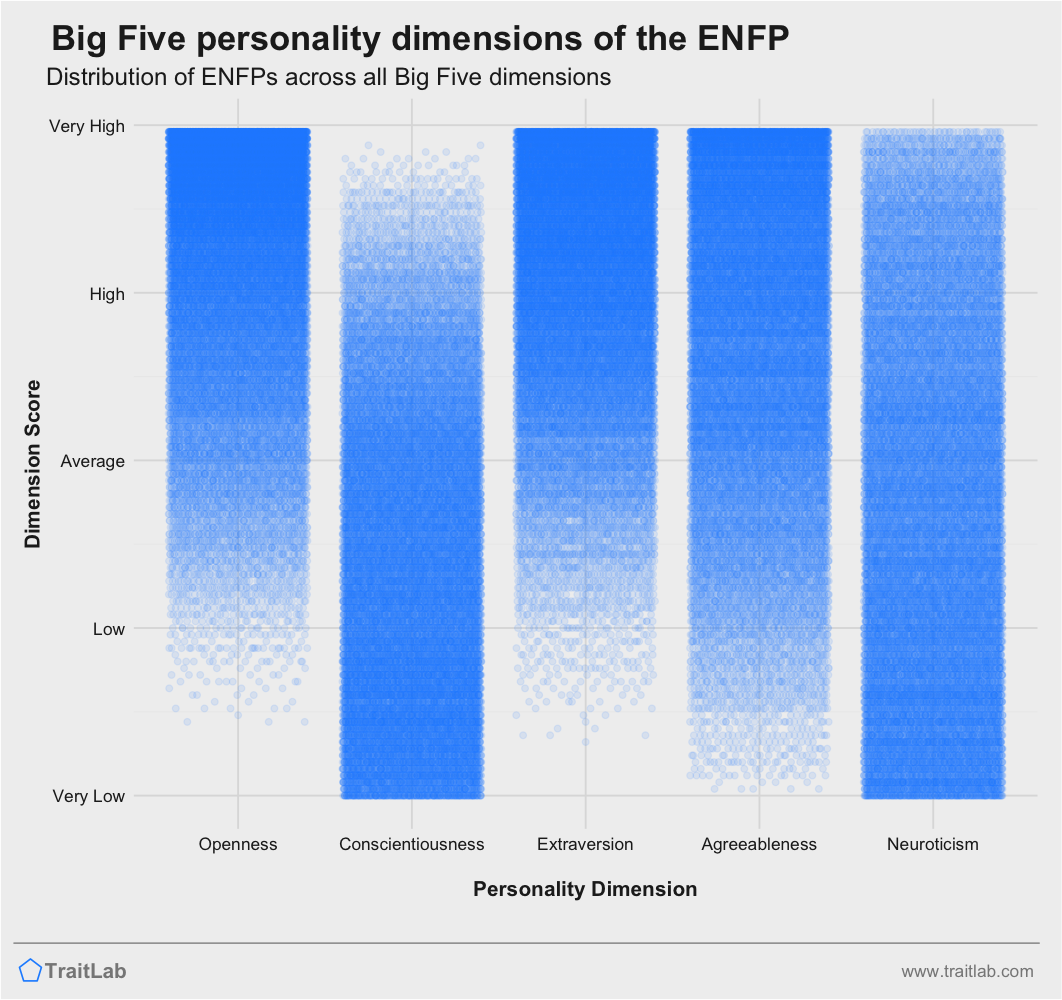
See the full ENFP Big Five article for more details.
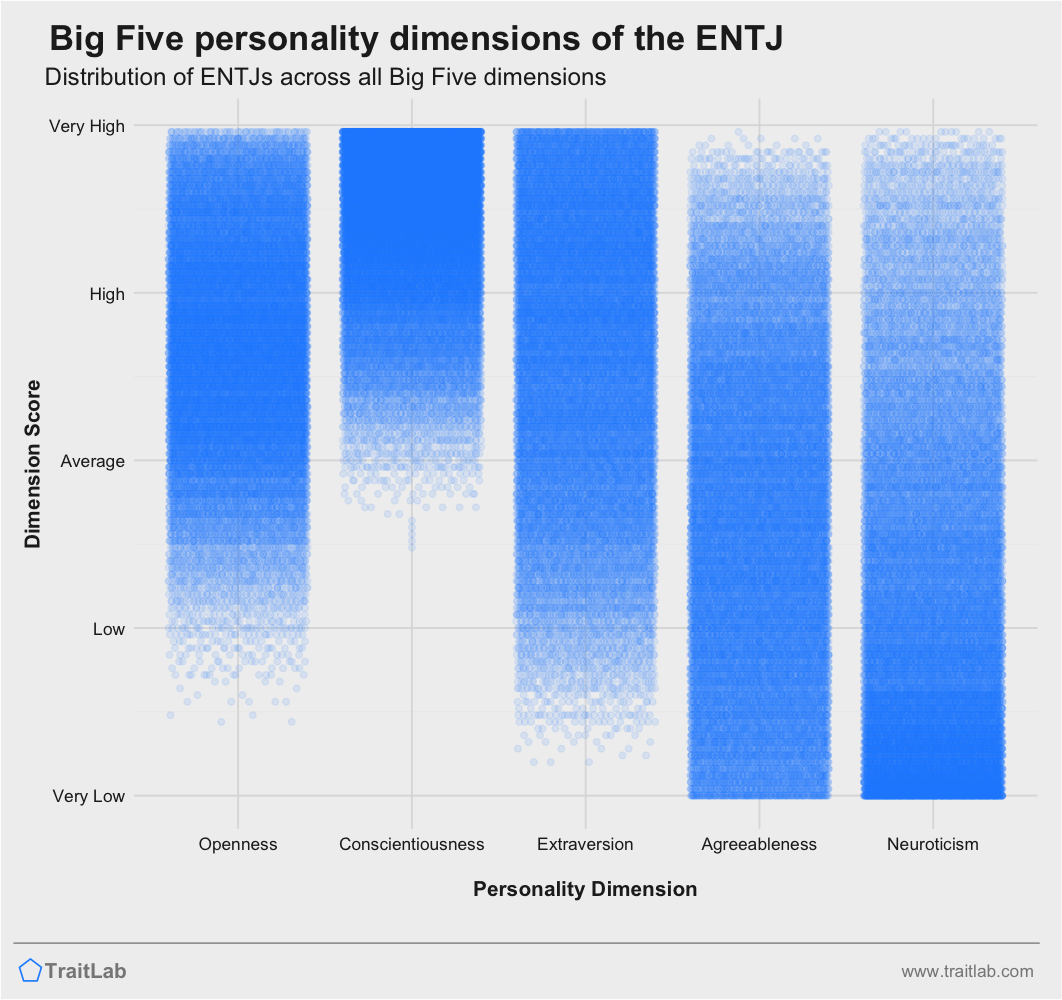
See the full ENTJ Big Five article for more details.
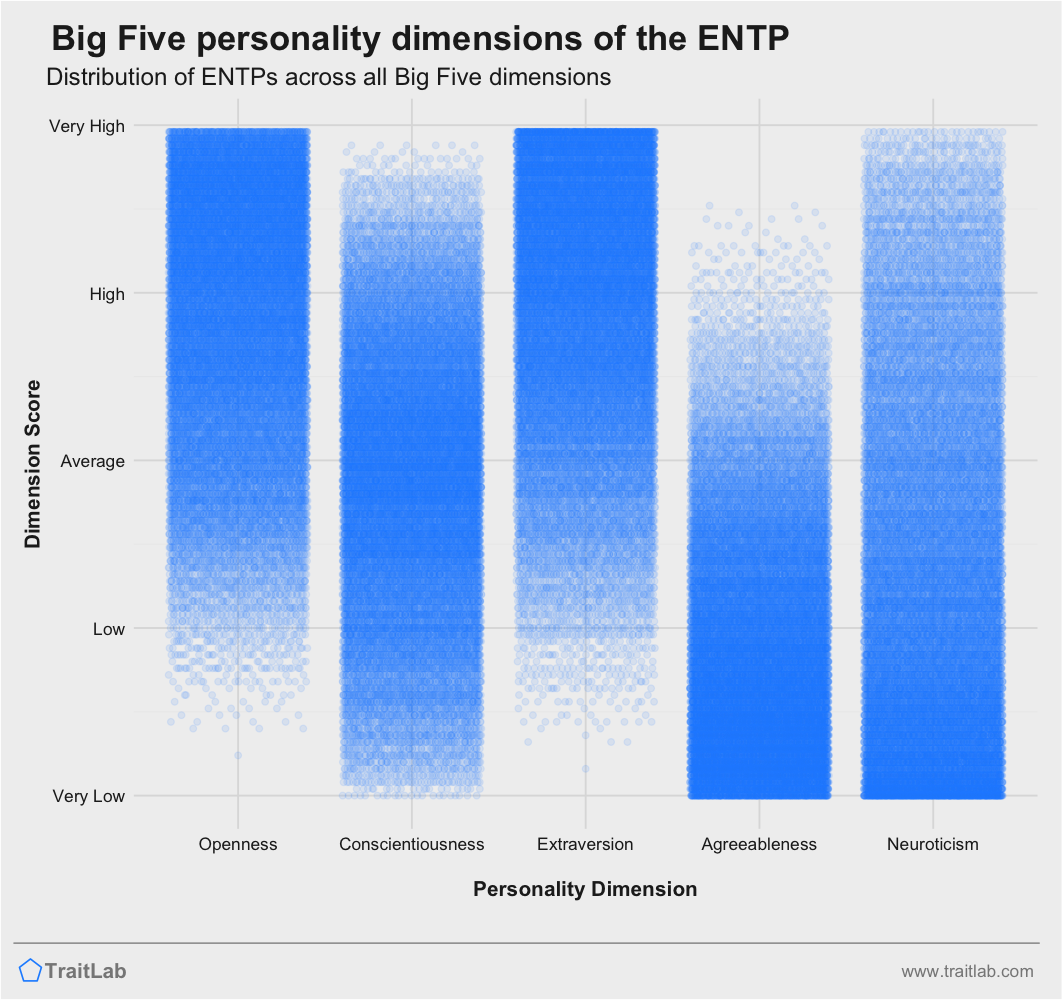
See the full ENTP Big Five article for more details.
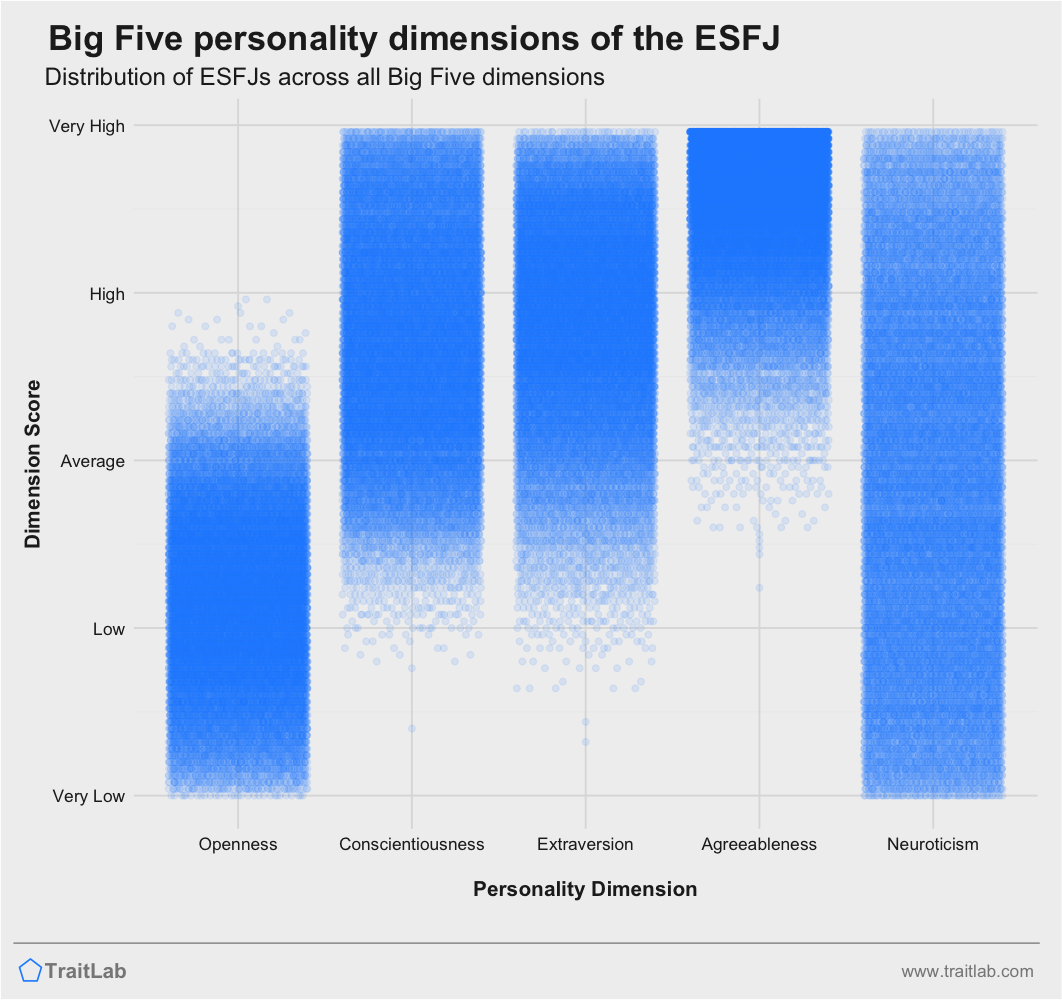
See the full ESFJ Big Five article for more details.
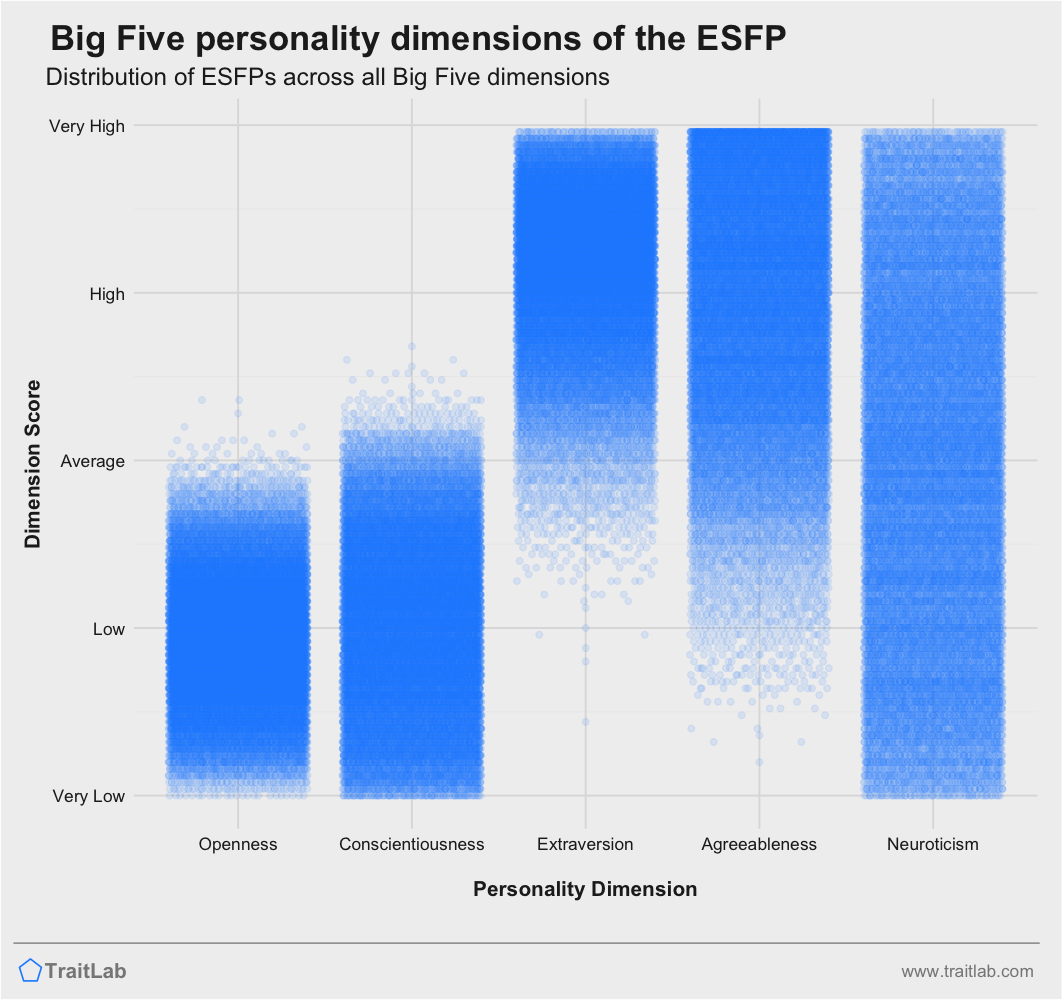
See the full ESFP Big Five article for more details.
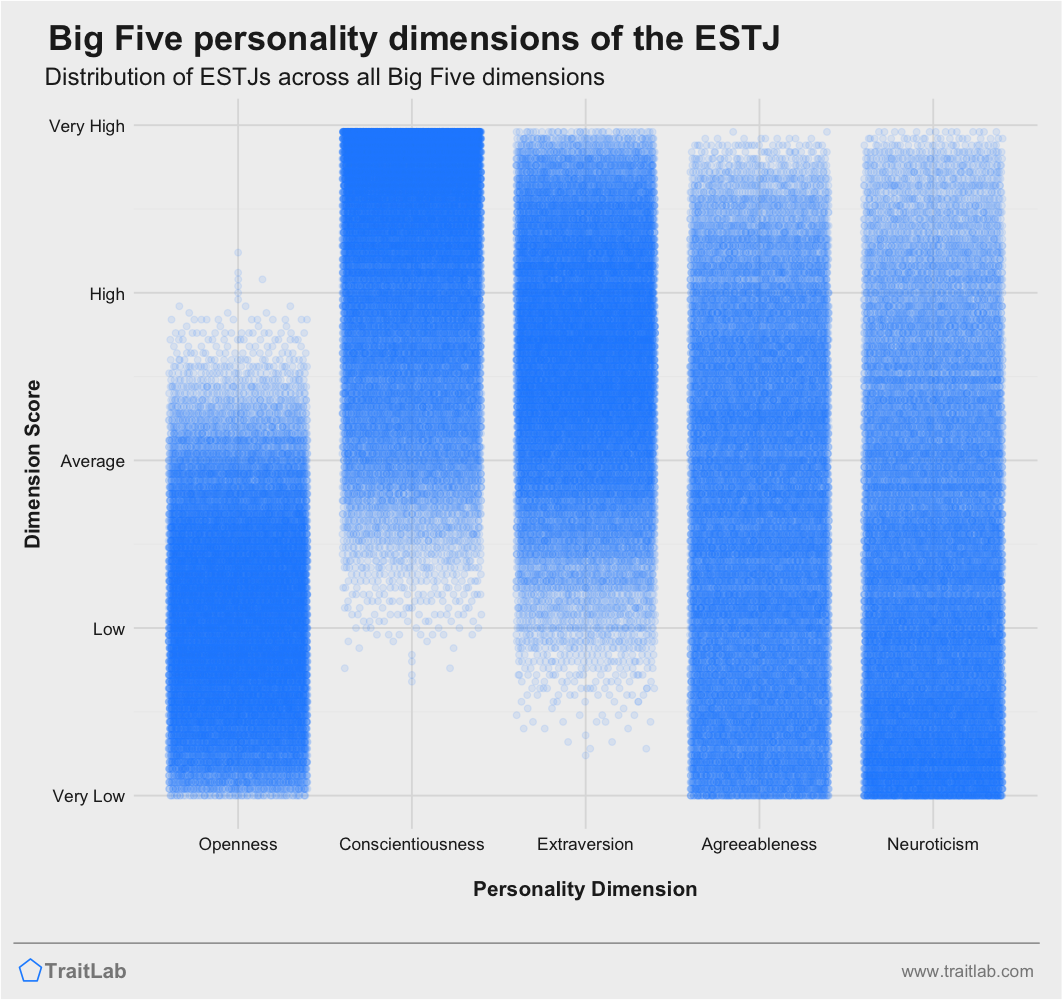
See the full ESTJ Big Five article for more details.
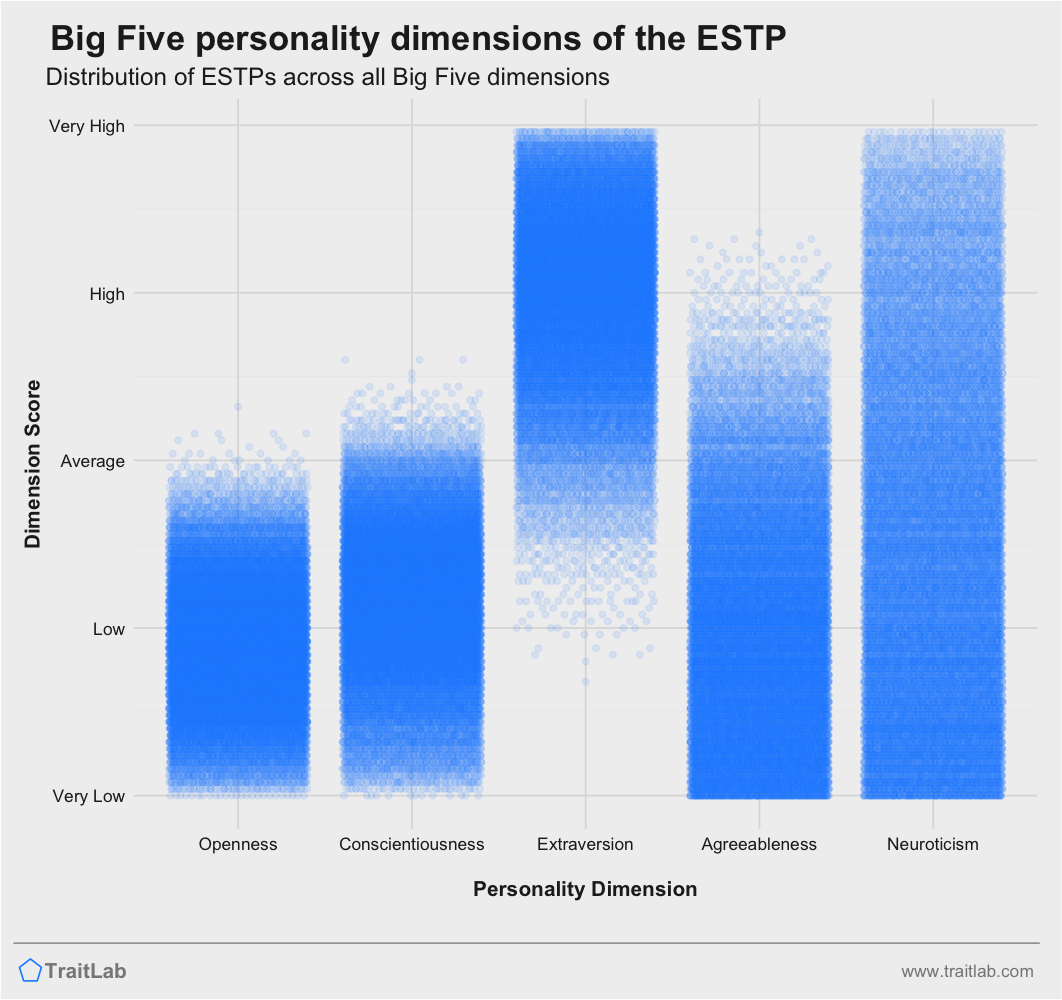
See the full ESTP Big Five article for more details.
For more about the Big Five:
For more on the MBTI scales and their correlations with the Big Five dimensions:
For more on the theory behind the MBTI: